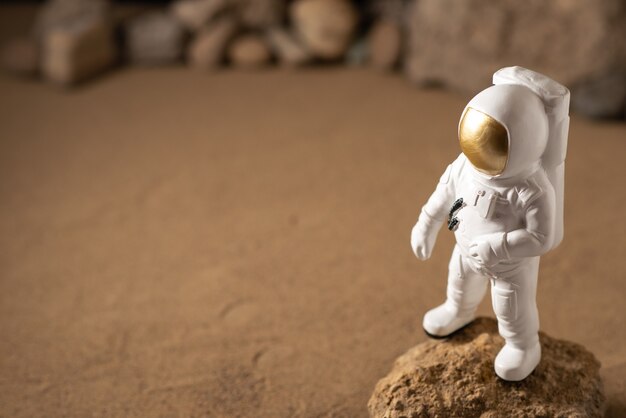Exploring the Red Planet – Fascinating Facts about Mars

Mars is the fourth planet from the sun in our solar system.
It is often called the Red Planet due to its reddish appearance.
Mars is the second smallest planet in our solar system.
The average temperature on Mars is around -80 degrees Fahrenheit.
Mars has the largest volcano in the solar system, called Olympus Mons.
The surface of Mars is covered in iron oxide, giving it its distinctive red color.
Mars has a day similar to Earth, as it rotates on its axis in approximately 24 hours and 37 minutes.
A year on Mars is equal to 687 Earth days due to its longer orbit around the sun.
Mars has the longest canyon in the solar system, called Valles Marineris.
The atmosphere on Mars is very thin, mostly composed of carbon dioxide.
Mars has two small, icy polar ice caps made of water and carbon dioxide.
Mars has experienced multiple global dust storms which can cover the entire planet for months.
The first successful mission to Mars was the NASA Pathfinder mission in 1997.
Mars has the largest shield volcano in the solar system, called Alba Mons.
Mars has a lower gravity compared to Earth, about 38% of Earth’s gravity.
The tallest volcano on Mars, Olympus Mons, is nearly three times the height of Mount Everest.
Mars has the tallest known volcano in the solar system, Arsia Mons.
The highest temperature recorded on Mars was around 86 degrees Fahrenheit near the equator.
Exploring the Red Planet – Fascinating Facts about Mars part 2
Mars has the largest dust storms in the solar system, which can sometimes be seen from Earth.
The first successful Mars landing was achieved by NASA’s Viking 1 mission in 1976.
Mars’ two moons are Phobos and Deimos, both of which are irregularly shaped and believed to be captured asteroids.
Scientists believe that Mars had liquid water on its surface in the past, and evidence of ancient riverbeds and lakes has been discovered.
Mars has the longest-lasting dust devil tracks in the solar system.
The highest point on Mars is the volcano Olympus Mons, which reaches an elevation of about 13.6 miles.
Mars has the largest canyon system in the solar system, which could stretch from New York to Los Angeles on Earth.
Mars’ thin atmosphere means that it does not provide significant protection from harmful solar radiation.
The first successful Mars rover mission was NASA’s Sojourner, which explored the surface in 1997.
The Curiosity rover, launched in 2011, found evidence that Mars could have supported microbial life in the past.
Mars’ surface is covered in iron-rich minerals, giving it a rusty appearance.
The seasonal freezing and melting of carbon dioxide ice on Mars creates unique patterns on its surface known as spiders or araneiform terrain.
Mars has the largest impact crater in the solar system, called the Borealis Basin.
The Mars Reconnaissance Orbiter discovered possible evidence of liquid water flowing on Mars in 20
The Mars 2020 mission by NASA aims to search for signs of ancient life and collect samples to potentially be returned to Earth.
Mars is home to the tallest volcano in our solar system, Olympus Mons, which stands at over 13.6 miles high.
Mars has a unique weather pattern with dust storms, cold temperatures, and extreme winds.
Mars has attracted significant interest from space agencies and private companies as a potential future destination for human colonization.
The Martian atmosphere is made up of mainly carbon dioxide, with traces of nitrogen and argon.
Scientists believe that Mars’ thin atmosphere may have been thicker in the past, allowing for the existence of liquid water.
Mars has a lower atmospheric pressure compared to Earth, making it impossible for liquid water to exist on its surface.
Various rovers sent to Mars have discovered evidence of ancient river deltas, suggesting that liquid water once flowed on the planet’s surface.
Mars has the largest known volcano in the solar system, Olympus Mons, which is shield-shaped and covers an area roughly equivalent to the state of Arizona.
The Mars Atmosphere and Volatile Evolution (MAVEN) spacecraft, launched in 2013, is studying how the atmosphere of Mars has changed over time.
Mars experiences extreme temperature variations, with average highs during the day around -10 degrees Celsius and lows at night reaching -80 degrees Celsius.
Mars has been a subject of fascination and inspiration for science fiction authors and filmmakers for many years.
SpaceX, the private aerospace company founded by Elon Musk, has plans to send humans to Mars within the next decade.